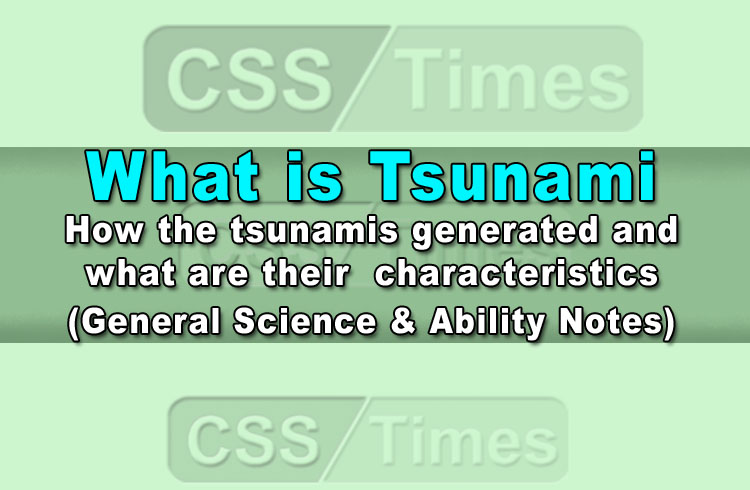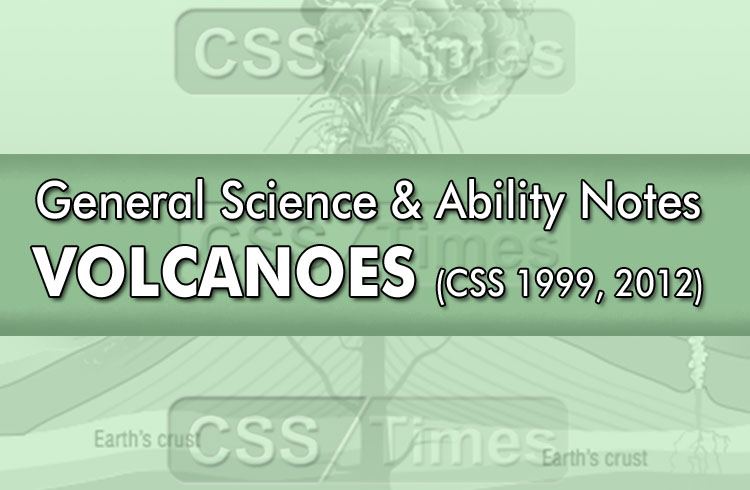Q: Describe different causes of Tsunami’. Is there any difference between a Tsunami and a tidal wave? Name the worst Tsunami ever recorded. (CSS-2018)
Q: What is tsunami? How the tsunamis generated and what are their characteristics? (CSS-2016)
What does “tsunami” mean? (CSS-2016/2018)
Tsunami is a Japanese word with the English translation, “harbor wave.” Represented by two characters, the top character, “tsu,” means harbor, while the bottom character, “nami,” means “wave.” In the past, tsunamis were sometimes referred to as “tidal waves” by the general public, and as “seismic sea waves” by the scientific community.
Characteristics (CSS-2018)
A tsunami can have wavelengths of 100 to 200 km, and may travel hundreds of kilometers across the deep ocean, reaching speed s of about 725 to 800 km/h. Upon entering shallow coastal waters, however, the waves may suddenly grow rapidly in height. When the waves reach the shore, they may be up to 30m high or more.

